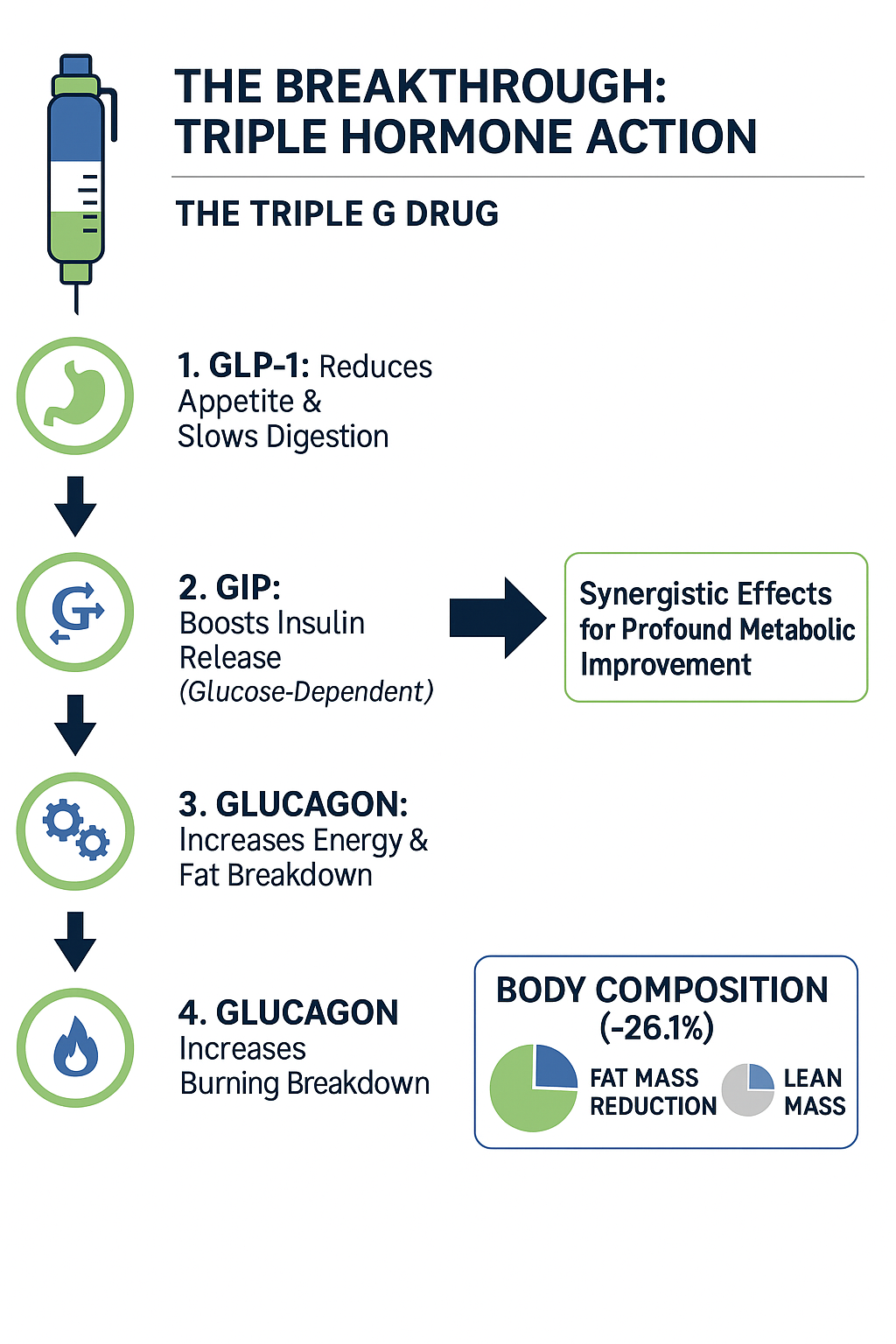
Embarking on a weight loss journey is a commendable decision that can significantly improve your overall health and well-being. However, the path to achieving your weight loss goals is often laden with challenges, one of which is navigating the complex world of food labels. For many British women, understanding these labels can feel overwhelming due to unfamiliar terms, misleading claims, and confusing portion sizes. This comprehensive guide aims to demystify food labels, empowering you to make informed dietary choices that align with your weight loss objectives.
Understanding how to read and interpret food labels is not merely about counting calories; it's about gaining insight into the nutritional content of the foods you consume and how they impact your body. The NHS emphasises that being informed about your food choices is crucial for maintaining a healthy weight and preventing chronic diseases. This knowledge can help you make healthier food decisions and reduce the risk of conditions like diabetes and heart disease.
By mastering the art of reading food labels, you can:
- Identify hidden sugars and unhealthy fats that may hinder your weight loss progress.
- Choose foods rich in essential nutrients that support overall health.
- Control portion sizes to avoid overeating.
This guide is tailored specifically for British women who are determined to lose weight and adopt healthier eating habits. Let's embark on this journey together, starting with the basics of decoding food labels.
Decoding the Food Label
Food labels provide a wealth of information, but they can be tricky to interpret. Let's break down the key components and understand how each affects your weight loss journey.

A. Serving Size and Calorie Awareness
Understanding Serving Sizes
The serving size listed on a food label is a standardised amount used to quantify the nutritional information provided. It's essential to recognize that this serving size may not reflect the portion you typically consume. Misjudging serving sizes can lead to unintentional overeating, derailing your calorie control efforts.
For example, if a packet of crisps lists a serving size of 25 grams, but you consume the entire 50-gram packet, you're ingesting double the calories and nutrients listed.
The Impact on Calorie Control
Accurate awareness of serving sizes is crucial for:
- Calorie Tracking: Ensuring you record the correct number of calories consumed.
- Nutrient Intake: Monitoring macronutrients (carbohydrates, proteins, fats) and micronutrients (vitamins, minerals).
- Portion Management: Avoiding overeating by sticking to recommended serving sizes.
Typical Serving Sizes vs. Actual Consumption
Let's examine common discrepancies between serving sizes and actual consumption:

Calculating Total Calories Consumed
To accurately calculate total calories:
- Check the Serving Size: Note the amount specified on the label.
- Measure Your Portion: Use kitchen scales or measuring cups.
- Do the Math: Multiply the nutritional values by the number of servings you've consumed.
For instance, if a cereal provides 120 calories per 30g serving, consuming 60g means you've ingested 240 calories.
Understanding Daily Value (DV) and Its Limitations
The Daily Value percentages indicate how much a nutrient in a serving of food contributes to a daily diet based on a 2,000-calorie reference. However, individual caloric needs vary based on age, sex, weight, height, and activity level. For weight loss, you may be consuming fewer calories, making these percentages less precise for your situation.
Tip: Use the DV as a general guideline rather than a strict rule.
B. Macronutrients and Weight Management
Macronutrients—carbohydrates, proteins, and fats—are the primary sources of energy in our diet. Understanding their roles can help you balance your intake for optimal weight loss results.
1. Carbohydrates
Carbohydrates are the body's preferred energy source, but the type and quantity you consume can affect your weight loss progress.
- Complex Carbohydrates: Found in whole grains, legumes, and vegetables, they digest slowly, providing sustained energy and helping you feel full longer.
- Simple Carbohydrates: Found in sugary snacks and refined grains, they digest quickly, leading to energy spikes and increased hunger soon after eating.
- Fibre: A type of carbohydrate that the body can't digest, fibre aids in digestion, promotes satiety, and helps regulate blood sugar levels.
Choosing the Right Carbs
- Opt for whole grain bread, brown rice, and whole wheat pasta.
- Incorporate legumes like lentils and chickpeas.
- Increase vegetable intake, especially leafy greens.
2. Protein
Protein is essential for repairing tissues and building muscle, which is particularly important when losing weight to ensure you're shedding fat, not muscle mass.
- Satiety Benefits: Protein-rich foods can help you feel fuller for longer, reducing overall calorie intake.
- Muscle Maintenance: Adequate protein supports muscle mass, which in turn boosts metabolism.
High-Protein Foods
- Lean meats: Chicken breast, turkey
- Fish: Salmon, mackerel
- Plant-based options: Tofu, tempeh, quinoa
3. Fats
Dietary fats are necessary for hormone production, nutrient absorption, and cell health.
- Healthy Fats (Unsaturated): Found in avocados, nuts, seeds, and olive oil. These fats support heart health and can aid in weight management when consumed in moderation.
- Unhealthy Fats (Saturated and Trans Fats): Found in processed foods, fatty cuts of meat, and full-fat dairy products. Excessive intake can lead to health issues like heart disease.
Incorporating Healthy Fats
- Use olive oil for cooking.
- Snack on a handful of almonds or walnuts.
- Add chia seeds or flaxseeds to smoothies.
Source: British Dietetic Association
Recommended Daily Intakes for Weight Loss
According to the NHS, the recommended daily calorie intake for weight loss is 1,400 calories for women and 1,900 calories for men. These targets are designed to create a calorie deficit of about 600 calories per day from the average recommended daily intake, which is typically 2,000 calories for women and 2,500 calories for men.
When aiming for weight loss, it's important to focus on the quality of food consumed, not just the calorie count. The NHS Eatwell Guide recommends that a balanced diet should include:
- At least 5 portions of fruit and vegetables daily
- Starchy foods making up just over a third of daily intake, preferably whole grain options
- Some dairy or dairy alternatives
- Protein sources such as beans, pulses, fish, eggs, and lean meat
- At least 2 portions of fish per week, including one portion of oily fish
While counting calories can be helpful, it's not the only approach to weight loss. Adjusting portion sizes and ensuring meals consist of the right types of food can also be effective. It's crucial to remember that individual needs may vary, and consulting with a healthcare professional for personalised advice is recommended when making significant changes to your diet.

C. Sugar: The Hidden Culprit
Excessive sugar intake is a significant barrier to weight loss, often hidden in foods you might not expect.
Understanding Types of Sugars
- Intrinsic Sugars: Naturally occurring sugars found in whole fruits and vegetables.
- Free Sugars: Added sugars plus sugars naturally present in honey, syrups, and fruit juices.
Health Impact of Excess Sugar
- Contributes to weight gain and obesity.
- Increases the risk of type 2 diabetes and heart disease.
- Can lead to tooth decay.
Identifying Added Sugars on Labels
Added sugars may appear under various names, including:
- Sucrose
- Glucose
- Fructose
- Maltose
- Corn Syrup
- Honey
- Agave Nectar
Visual Aid: Understanding Sugar Names
Note: Always check the ingredients list for these terms to identify added sugars.
Recommended Daily Sugar Intake
The SACN advises that free sugars should not exceed 5% of your daily energy intake. For an average woman, this equates to:
- Approximately 25 grams per day
- Around 6 teaspoons of sugar
Hidden Sugar Sources in Processed Foods
- Breakfast Cereals: Some brands contain up to 12g of sugar per serving.
- Sauces: Tomato ketchup and barbecue sauce can contain high amounts of sugar.
- Low-Fat Yoghourts: Often have added sugars to enhance flavour.
- Snack Bars: Marketed as healthy but may contain significant sugar levels.
Strategies to Reduce Sugar Intake
- Choose unsweetened or natural versions of foods.
- Read labels carefully for sugar content.
- Limit consumption of fruit juices and smoothies.
D. Ingredients List: Unmasking What's Inside
The ingredients list reveals everything that's in your food, offering insights into its quality and nutritional value.
Importance of the Ingredients List and Its Order
- Order Matters: Ingredients are listed by weight, from highest to lowest.
- First Few Ingredients: These make up the bulk of the product. Aim for foods where whole foods appear first.
Example Ingredients List Breakdown
Product: Fruit-Flavoured Yogurt
- Skimmed Milk: Main ingredient, indicating a dairy-based product.
- Sugar: Second on the list, suggesting high sugar content.
- Strawberries (5%): Low actual fruit content.
- Thickener (Pectin): An additive.
- Natural Flavourings: Enhances taste artificially.
Interpreting the List
- High Sugar Content: Sugar as a primary ingredient is a red flag.
- Low Whole Food Content: Minimal actual fruit.
- Additives and Preservatives: Presence of E-numbers or unfamiliar chemicals.
Prioritising Whole Foods
- Whole Food Ingredients at the Top: Look for ingredients like whole grains, nuts, seeds, fruits, and vegetables.
- Minimal Ingredients: Shorter lists typically mean less processed foods.
Identifying Potential Allergens
- Common allergens must be highlighted, often in bold or capital letters.
Common Allergens Include:
- Gluten
- Peanuts
- Tree Nuts
- Milk
- Eggs
- Soy
- Fish
- Shellfish
Source: Food Standards Agency
Tip: If you have food allergies or intolerances, always read the ingredients list carefully, even on products you've purchased before, as recipes can change.
Beyond the Label: Building a Healthy Diet
Understanding food labels is a crucial step, but incorporating that knowledge into daily habits is where real progress happens.
A. Prioritising Whole Foods
Benefits of Whole Foods
- Nutrient-Dense: Rich in vitamins, minerals, and antioxidants.
- Less Processed: Fewer additives and preservatives.
- Supports Satiety: High fibre content keeps you feeling full.
Whole Food Options in British Supermarkets
- Fruits and Vegetables: Apples, berries, carrots, broccoli.
- Whole Grains: Oats, quinoa, wholemeal bread.
- Lean Proteins: Chicken breast, turkey, fish like cod and haddock.
- Legumes: Lentils, chickpeas, black beans.
- Healthy Fats: Olive oil, avocados, nuts.
Meal Planning Based on Whole Foods
- Breakfast: Porridge oats with fresh berries and a sprinkle of flaxseeds.
- Lunch: Quinoa salad with mixed vegetables and grilled chicken.
- Dinner: Baked salmon with steamed broccoli and brown rice.
- Snacks: Carrot sticks with hummus, a handful of almonds.
Shopping Tips
- Perimeter Shopping: Stick to the outer aisles where fresh foods are located.
- Read Labels: Even on foods marketed as 'natural' or 'healthy'.
- Bulk Cooking: Prepare large batches of whole foods to save time.
B. Mindful Eating Practices
The Importance of Mindful Eating
Mindful eating encourages a healthier relationship with food by focusing on the experience of eating and listening to your body's hunger cues.
Concept of Intuitive Eating
- Reject Diet Mentality: Let go of rigid dieting rules.
- Honour Hunger: Eat when you're genuinely hungry.
- Feel Fullness: Recognize when you're satisfied and stop eating.
- Discover Satisfaction: Choose foods that you enjoy and that nourish your body.
Source: Academy of Nutrition and Dietetics
Benefits of Mindful Eating
- Reduced Overeating: Being present can prevent mindless snacking.
- Enhanced Enjoyment: Increases appreciation of food flavours and textures.
- Improved Digestion: Eating slowly aids digestive processes.
Tips for Practising Mindful Eating
- Set a Peaceful Environment: Eat at a table, free from distractions like TV or smartphones.
- Engage Your Senses: Notice the colours, smells, and textures of your food.
- Chew Thoroughly: Aim for at least 20-30 chews per bite.
- Pause Between Bites: Put your fork down and take sips of water.
- Listen to Your Body: Stop eating when you feel comfortably full.
Overcoming Common Challenges
- Emotional Eating: Identify triggers and find alternative coping mechanisms, such as journaling or walking.
- Social Situations: Plan ahead and make mindful choices at restaurants or events.
C. Consulting a Registered Dietitian
The Role of a Registered Dietitian
Registered dietitians are qualified health professionals who provide evidence-based dietary advice tailored to your individual needs.
Benefits of Seeking Professional Advice
- Personalized Nutrition Plans: Customised to your health goals, dietary preferences, and lifestyle.
- Expert Guidance: Up-to-date knowledge on nutrition science.
- Support and Accountability: Regular check-ins to monitor progress and adjust plans.
Services Offered by Dietitians
- Nutritional Assessment: Evaluating your current diet and identifying areas for improvement.
- Meal Planning: Creating balanced meal plans that suit your taste and budget.
- Education: Teaching you how to read food labels and make healthier choices.
- Specialised Support: Managing medical conditions like diabetes or food intolerances.
Finding a Registered Dietitian in the UK
- British Dietetic Association (BDA): Use their Find a Dietitian service to locate professionals in your area.
- NHS Referrals: Speak to your GP about being referred to a dietitian through the NHS.
- Private Practice: Many dietitians offer private consultations, both in-person and online.
Questions to Ask When Choosing a Dietitian
- Qualifications: Ensure they are registered with the Health & Care Professions Council (HCPC).
- Experience: Inquire about their experience with weight management.
- Approach: Discuss their methods to ensure they align with your preferences.
Conclusion
Achieving weight loss success is a multifaceted journey that extends beyond mere calorie counting. By mastering the skill of reading and interpreting food labels, you empower yourself to make informed dietary choices that support your health goals. Remember:
- Serving Sizes Matter: Always measure your portions to ensure accurate calorie and nutrient intake.
- Balance Macronutrients: Opt for complex carbohydrates, lean proteins, and healthy fats.
- Beware of Hidden Sugars: Read labels carefully to identify and limit added sugars.
- Choose Whole Foods: Prioritise natural, unprocessed foods for maximum nutritional benefit.
- Practise Mindful Eating: Cultivate a healthier relationship with food by listening to your body's cues.
- Seek Professional Guidance: Don't hesitate to consult a registered dietitian for personalised support.
Embarking on this journey may seem daunting, but every small step brings you closer to your goals. Celebrate your progress, stay committed, and remember that making informed food choices is a powerful tool for achieving lasting weight loss and improved health.
Additional Resources
- NHS - Live Well: Comprehensive advice on healthy living and weight management.
- British Nutrition Foundation: Reliable information on nutrition and healthy eating.
- Change4Life - Food Facts: Practical tips for making healthier food choices.
- Eatwell Guide: Visual representation of a balanced diet.
- British Dietetic Association - Food Facts: Fact sheets on various nutrition topics.
- MyFitnessPal: App for tracking food intake and physical activity.
References
- British Dietetic Association. (n.d.). Fat. Retrieved from https://www.bda.uk.com/resource/fat.html
- British Heart Foundation. (n.d.). Food Labels Explained. Retrieved from https://www.bhf.org.uk/informationsupport/heart-matters-magazine/news/food-labels-explained
- Food Standards Agency. (n.d.). Allergen Guidance for Food Businesses. Retrieved from https://www.food.gov.uk/business-guidance/allergen-guidance-for-food-businesses
- National Health Service. (n.d.). Carbohydrates and Sugars. Retrieved from https://www.nhs.uk/live-well/eat-well/food-types/carbohydrates-and-sugars/
- National Health Service. (n.d.). Healthy Weight. Retrieved from https://www.nhs.uk/live-well/healthy-weight/
- National Institute for Health and Care Excellence. (2014). Weight Management: Lifestyle Services for Overweight or Obese Adults. Retrieved from https://www.nice.org.uk/guidance/ph53
- Public Health England. (2016). The Eatwell Guide. Retrieved from https://www.gov.uk/government/publications/the-eatwell-guide
- Scientific Advisory Committee on Nutrition. (2015). Carbohydrates and Health Report. Retrieved from https://www.gov.uk/government/publications/sacn-carbohydrates-and-health-report
Take charge of how you look and feel.
Backed by science. Guided by experts.
SheMed’s medical weight loss programme combines expert care and science-backed treatment to help you feel and look your best — for life.
SheMed’s medical weight loss programme combines expert care and science-backed treatment to help you feel and look your best — for life.
The content on the SheMed blog is provided for general informational and educational purposes only. While SheMed provides professional weight loss services and strives to ensure the information shared is accurate and up to date, we make no representations or guarantees as to its accuracy, completeness, or timeliness. This content should not be taken as personal medical advice or a substitute for consultation with a qualified healthcare provider. Always speak with your doctor or licensed medical professional about your individual health or medical needs before starting any new treatment or programme. Never disregard or delay seeking professional medical advice because of something you have read on this site. SheMed is not responsible for any actions you may take based on the information provided in this blog.
Subscribe to our Newsletter
Thank you! Your submission has been received!
Oops! Something went wrong while submitting the form.





